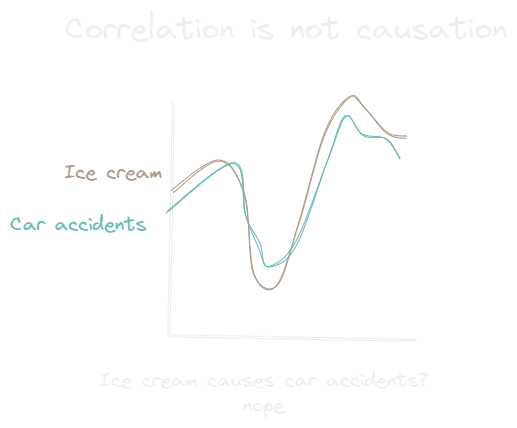Correlation is not Causation
Notes
as David Hume said, we tend too quickly to assume causality between things even though causality is not something that we can directly observe. We have to remember that two things that go together aren't necessarily correlated. For example, if A and B are correlated, it might be:
- A -> B (A causes B)
- B -> A (B causes A)
- C -> A & B (A third thing C causes both A and B)
- Random chance (these things acted as correlated up to now, but might no be so in the future)
Since all of these cases are possible, we can't assume causation.
Causality is not something that exist in the material world in a sense that we can overserve it, measure it, quantify it. It is not like molecules, atoms or colors Naturalism. There is no "causality" particle. Rather, causality is a relationship between physical materials which together form a phenomenon Systematical Thinking. For example, when we see one ball hits the other, and immediately the second one begins to move, we interpret the hit of the first as the causal factor that has caused the second one to move. It is an act of Judgment. It might make sense for physical things, but gets more complicated when we switch to social science. There we might confuse Is vs Ought, we might fall pray to using the current world as a justification for itself, which is an obvious bias.
Either way, the existence of Noise and Randomness prevents us from being accurate in our assessments of causality, even if it truly exists. Whenever we encounter someone who presents a correlation = causation argument, we should be skeptic of their argument. We have to resist the urge to see a connection where there's none.
Visual

Overview
🔼Topic:: Statistics (MOC) ◀Origin:: David Hume 🔗Link::